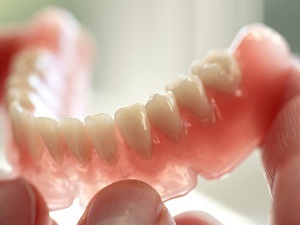 Those who managed to live up to advanced years, retaining their own teeth, not so much. For most people, their number begins to decrease at a young age. This problem is not only moral discomfort, but also has a negative impact on health.
Those who managed to live up to advanced years, retaining their own teeth, not so much. For most people, their number begins to decrease at a young age. This problem is not only moral discomfort, but also has a negative impact on health.
A full chewing of food contributes to the normal functioning of the digestive tract. And for a normal meal, in turn, you need to have a proper bite and a healthy dentition. Today, problems with the absence of teeth in the oral cavity are easily solved with the help of modern dentures of the new generation. Such systems have many advantages over their older counterparts.
Contents
- Modern dental prostheses
Contemporary dental prostheses
- Removable structures
- Prostheses without palate and Sandwich for snack
- Acry Free - new technologies and proven quality
- Clasp structure
- Telescopic locking system
- Using acrylic
- Nylon products
- Fixed solutions
- Bridges
- Implantation as a progressive methodrecovery
- Using the crowns
- Making a choice - reviews and express analysis
- What is better to choose?
Modern dental prostheses
In modern dentistry there are a large number of types of prostheses, for the manufacture of which a wide variety of materials are used.
Depending on the type, their designs are removable and non-removable. The first set to patients with complete or partial lack of teeth. Such devices can be installed in the oral cavity and extracted independently, each time carrying out their hygienic cleaning. This allows you to completely remove all remnants of food from the artificial teeth.
For the cleaning of non-removable systems, the usual cleaning with a toothbrush is used. Such artificial designs are firmly fixed in the mouth and practically do not differ from natural ones. If it is necessary to restore a single tooth, this option is considered the most optimal.
Both removable and non-removable dentures of the new generation have the following advantages:
- the most natural appearance;
- open palate;
- the possibility of using soft materials without metal elements, injuring the oral cavity;
- reliable fastening;
- possibility not to remove the structure before going to bed;
- a comfortable meal, no emetic pauses when wearing.
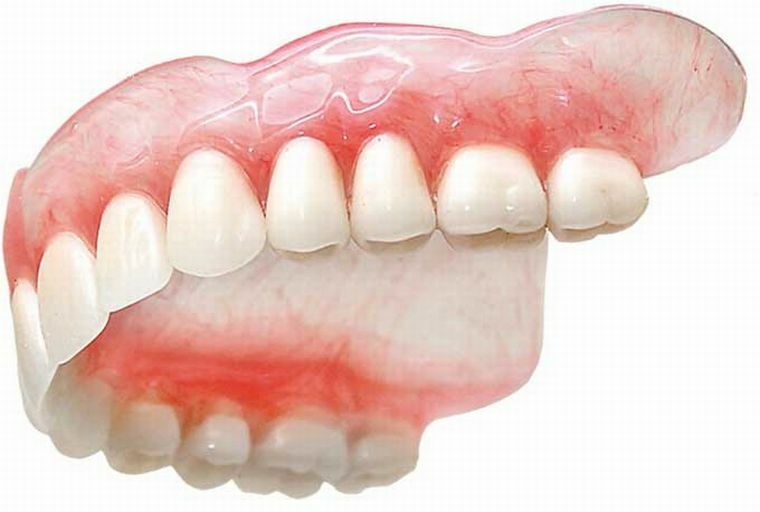
Removable constructions
The modern analogues of cover removable prostheses include Sandwich, Acry Free systems, as well as acrylic, nylon, ultramodern clasp Quadratti and new generation telescopic structures.
Prostheses without palate and Sandwich on snack
Until recently, the concept of "denture" caused unpleasant associations with the removable jaws in the glass. At present, modern dentistry uses the newest materials and methods to restore teeth, which allow patients to feel much more comfortable.
The main advantage of modern removable dentures is the ability to fasten structures without closing the palate. Thanks to this, the process of eating people with such designs has become more complete due to open taste buds.
Constructions without palate do not constrain the movements of the tongue, and therefore do not cause violation of the diction. Previously, some patients had to refuse to wear removable artificial teeth covering the sky, as they caused a constant gag reflex. Today, due to the lack of a palatial part of new designs, this problem completely disappeared.
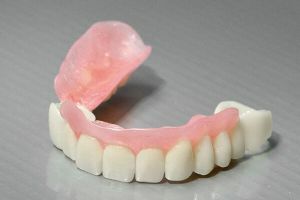
Sandwich-prostheses are removable structures of a new generation without the sky, made of strong and at the same time elastic material, which allows to carry such systems for a long time without feeling any discomfort.
Install the Sandwich directly on the gums, while any auxiliaries( gels, glue), or inconvenient fasteners for installation do not use.
Acry Free - new technologies and proven quality
Acry Free - are made of translucent material of natural pink color.
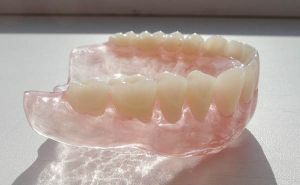 The main difference from traditional removable structures is high elasticity and the possibility of repair.
The main difference from traditional removable structures is high elasticity and the possibility of repair. The material used for the manufacture of such products does not absorb foreign odors and moisture, and also significantly reduces the adaptation period.
Clasp structure
Modern clasp constructions from Quattro Ti consist of a dense arc equipped with
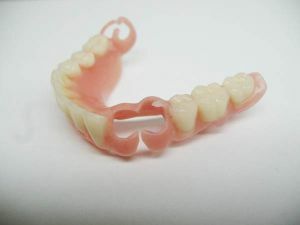 crowns. This product is reliable, has a long service life and is able to fix well in the mouth.
crowns. This product is reliable, has a long service life and is able to fix well in the mouth. To create a clasp prosthesis, innovative alloys are used that are easy and aesthetic.
With this design, you can replace two or more teeth located on the upper jaw.
Telescopic locking system
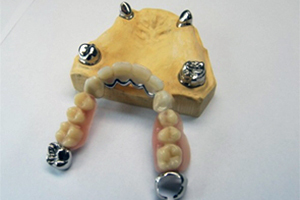 Telescopic construction is considered one of the most reliable. They are installed as follows: using a special cap made of metal, the supporting tooth is closed and the workpiece is cemented - it is a permanent part of the structure.
Telescopic construction is considered one of the most reliable. They are installed as follows: using a special cap made of metal, the supporting tooth is closed and the workpiece is cemented - it is a permanent part of the structure. The minus of such systems is their high cost - it is due to the fact that each tooth is installed on two crowns. Approximately every four years, the crown should be replaced because of possible loosening and loss of adhesion.
Using acrylic
New generation dentures made of acrylic have the lowest cost, which makes them one of the most popular among patients. Products made of acrylic, look very natural, because this material allows you to select the right shade, not differing from the color of native enamel.
The main disadvantages of acrylic are not always reliable fixation and fragility of the product. In addition, this material has a high porosity, which contributes to the penetration of moisture under the prosthesis and rapid multiplication of pathogens.
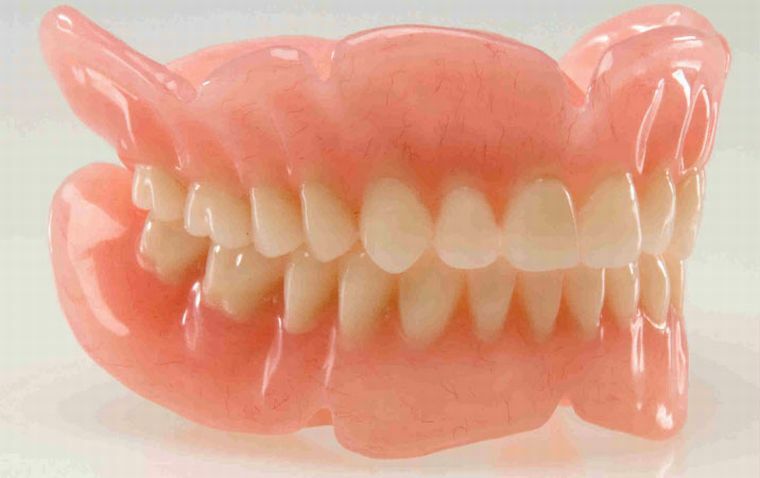
Nylon products
For the production of such structures, soft plastic is used, with no metallic elements in them.
This allows you to install such products to patients who have high tissue sensitivity and a tendency to allergic reactions.
Their softness, reliable attachment by the method of suction allows one to imperceptibly replace the missing one or several molars. For the manufacture of prostheses of the new generation, this material is most often used.
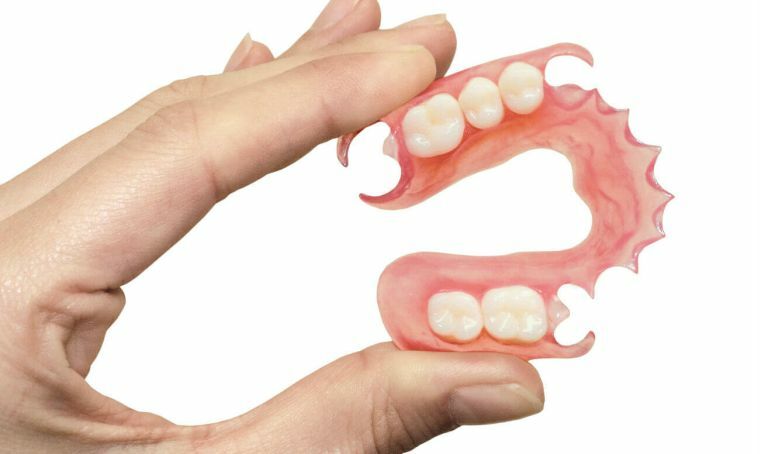 It should be noted that acrylic and nylon products do not have a uniform distribution of the chewing load. Therefore, they will not chew very hard food. If this rule is ignored, the development of atrophy of bones or gums may occur.
It should be noted that acrylic and nylon products do not have a uniform distribution of the chewing load. Therefore, they will not chew very hard food. If this rule is ignored, the development of atrophy of bones or gums may occur.Fixed solutions
Today, the popularity of non-removable dentures is very high. This is due to the possibility of restoring both the two teeth, and a number of. And modern materials and technologies allow you to select shades that perfectly match the color of this enamel.
Bridges
With the help of bridges it is possible to restore two consecutive teeth qualitatively.
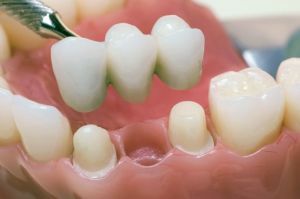
For this, both crowns are fixed on a special bridge, and after it is installed on adjacent teeth.
To install the bridge, the dentist pre-grinds the standing teeth next to each other, and this is one of the main disadvantages of bridge prosthetics.
Implantation as a progressive method of restoration
Implants have some similarity with prostheses. The main difference from them is the ability to restore only one tooth.
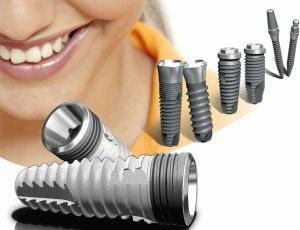 The process of implant placement is to implant the pin directly into the bone tissue. Thanks to this method, the patient retains a physiological and chewing function. And it helps to optimally distribute the load on the dentition.
The process of implant placement is to implant the pin directly into the bone tissue. Thanks to this method, the patient retains a physiological and chewing function. And it helps to optimally distribute the load on the dentition. When choosing an implant, you need to pay attention to the manufacturer, patient feedback and material of manufacture, since this moment has a very strong effect on cost, aesthetics and strength.
Use of the crowns
Application of artificial crowns, as one of the options for restoration of teeth, does not lose relevance today. To date, the following materials for their manufacture are popular:
- Metal .Solid-cast metal structures are durable and functional. Their thickness can be from 0.3 to 0.5 mm. For
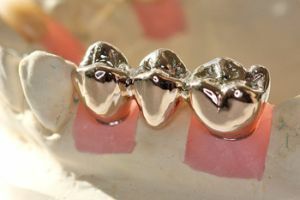 , such products are made of steel, gold-plated steel, palladium or chromium-cobalt alloys. The peculiarity of simple metals is their high strength and resistance to abrasion. However, when wearing metal crowns, their non-natural origin is immediately noticeable.
, such products are made of steel, gold-plated steel, palladium or chromium-cobalt alloys. The peculiarity of simple metals is their high strength and resistance to abrasion. However, when wearing metal crowns, their non-natural origin is immediately noticeable. - Metal Ceramics .Crowns made of this material are a metal base with a ceramic coating that mimics the color of a natural tooth. The base is made of chrome-cobalt, chromium-nickel, gold-palladium or gold-platinum alloy. The cost of the product is affected by the material from which the base is made. Metal ceramic crowns are very strong, but to achieve the best aesthetic appearance, you need to carefully select the desired shade, which coincides with the color of the patient's teeth.
- Ceramics .Crowns made of this material are less durable than metal-ceramic crowns. In this regard, they are not used to replace chewing teeth. Most often ceramic products are put on the front rows. The appearance of ceramic crowns is similar to real chewing organs. In addition, this material is ideally combined with the tissues of the gums, and it will never cause allergies.
- Zirconium dioxide - these crowns have excellent biocompatibility. And strength, lightness and aesthetic characteristics make this material one of the best on the background of the rest. Its main disadvantage is the high cost. But the ability to install zirconium dioxide on the chewing sides, making the prosthesis virtually indistinguishable from the present, fully justify their cost.
- Aluminum oxide .This material is an excellent alternative to dioxide-zirconium crowns. It is painted in white translucent color, does not cause allergies and has good aesthetic qualities. Due to its physical properties, aluminum oxide makes it possible to produce the most accurate casts. A disadvantage of aluminum can be called a slightly lower strength compared to zirconia, but its price compares favorably with the cost of the latter. Select crowns made of this material is recommended if they are to be installed for low masticatory loads.
We make a choice - reviews and express analysis
Reviews of patients who managed to feel all the advantages of a new generation of dentures on their own.
When it became necessary to install a prosthesis, the doctor recommended inserting an acrylic. Although it is cheaper than some other options, it also performs well its function.
Tatiana, Moscow
After removal of two adjacent teeth, she installed a removable Acry-Frie prosthesis to prevent the displacement of healthy teeth due to the resulting free space.
First time new teeth gave me terrible discomfort, but eventually I got used to it. In appearance, the artificial teeth are no different from my "relatives".The only drawback - when chewing solid food, for example, meat, the prosthesis begins to slip. Nevertheless, I am happy, especially because I did not have to grind the neighboring teeth.
Olga, Voronezh
What is better to choose?
In order to understand which prosthesis best suits one or another patient, it is necessary to determine the following questions:
- How many teeth are planned to be restored? So, if you need to restore multiple teeth at once,
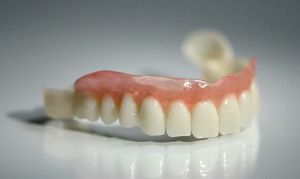 install removable systems is meaningless. In this case, the doctor stops choosing non-removable structures.
install removable systems is meaningless. In this case, the doctor stops choosing non-removable structures. - What effect should I achieve in the first place? To restore a beautiful smile, the best option is a removable denture made of acrylic.
- What is the cost of the structures? The price of a non-removable denture of a new generation is quite high. With a limited budget, it is recommended that you stop the selection for a detachable design, despite the fact that it can cause discomfort and is of lower quality. The cost of installing any modern system can range from 12 thousand to 45 thousand rubles.
- Removable structures
